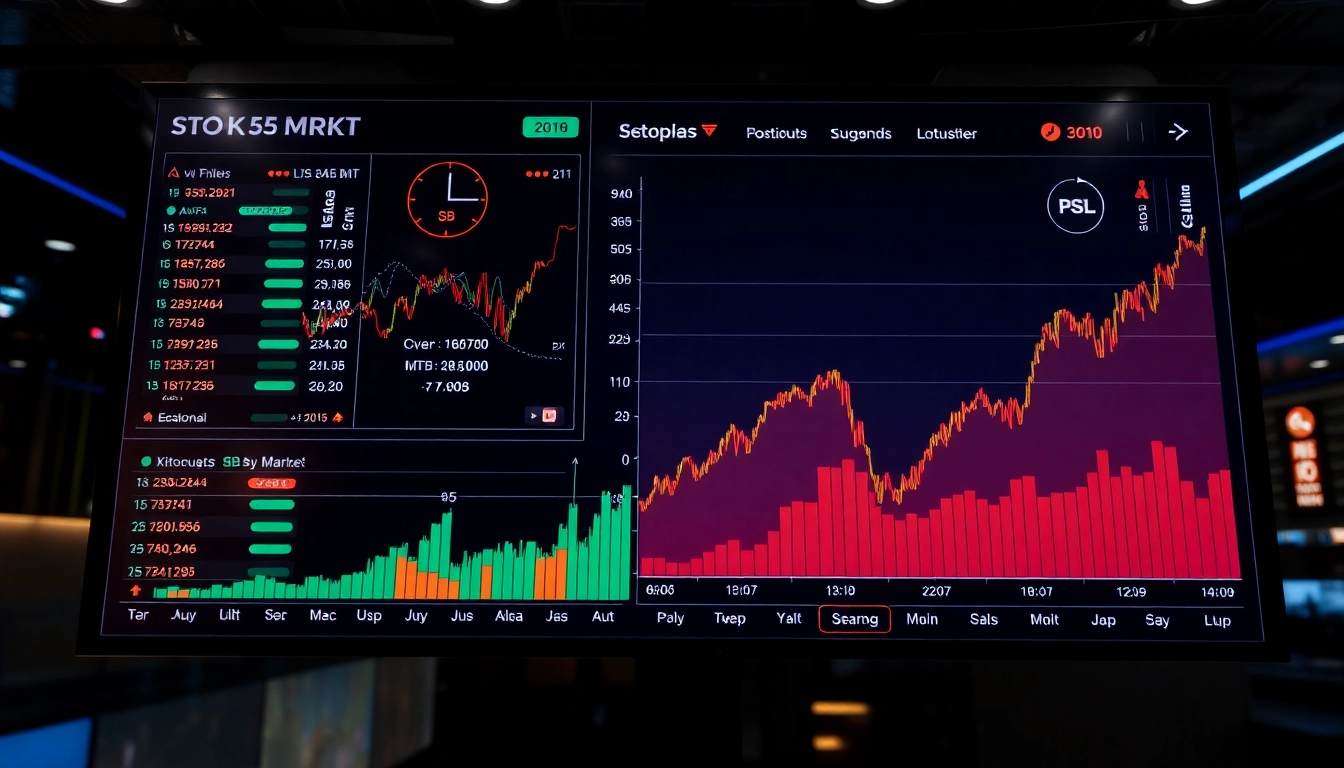Understanding Trading View: Overview and Core Features
Introduction to Trading View and Its Market Coverage
In today’s dynamic financial landscape, effective market analysis and real-time data access are essential for traders and investors aiming to make informed decisions. Among the leading platforms addressing these needs is trading view. This digital powerhouse combines comprehensive charting tools, vast market coverage, and an active social community to serve both novice and professional traders worldwide. Trading View provides instantaneous access to a wide array of markets, including equities, cryptocurrencies, forex, commodities, and indices, enabling users to monitor and analyze multiple instruments seamlessly from a single interface.
With a focus on transparency and collaboration, Trading View stands out as an all-in-one platform that not only offers data but also fosters community-driven insights. Its extensive market coverage ensures traders are never limited by geographical boundaries, aligning with the needs of global traders seeking competitive edges in diverse markets.
Key Tools and Charting Capabilities
At the heart of Trading View’s appeal lie its advanced tools and robust charting features. The platform boasts an intuitive, customizable interface that allows traders to visualize market data through a variety of chart types including line, bar, candlestick, and more specialized options like Heikin-Ashi. Users can overlay technical indicators—such as Moving Averages, Relative Strength Index (RSI), Bollinger Bands, and Fibonacci Retracements—to identify trends, momentum, and potential reversal points.
One of Trading View’s standout features is its scripting language, Pine Script, which empowers traders to develop custom indicators and trading strategies. Whether it’s creating bespoke signals or backtesting complex algorithms, Pine Script provides flexibility that caters to novice coders and seasoned quant traders alike.
The platform also offers drawing tools—trend lines, channels, patterns, and annotations—that facilitate precise technical analysis. These tools, combined with real-time data feeds, enable traders to conduct in-depth analysis and optimize entry and exit points with confidence.
Social and Community Aspects for Traders
Trading View goes beyond mere data visualization by integrating social networking features that promote community engagement. Traders can publish ideas, share chart setups, and discuss market movements within dedicated forums. This collaborative environment fosters continuous learning and collective intelligence, enabling less experienced traders to gain insights from veterans and industry experts.
Community-contributed ideas often include detailed analyses, trading setups, and strategic considerations, which can serve as valuable educational resources. Additionally, the platform’s chat groups and comment sections facilitate real-time discussion, offering traders a chance to react promptly to market shifts or breaking news.
Active social features also include following prominent traders, participating in polls, and engaging with trending discussions. Such features underpin a thriving ecosystem that enhances market understanding through shared knowledge and peer feedback.
Getting Started with Trading View: Setup and Basic Usage
Creating an Account and Navigating the Interface
Getting started with trading view is straightforward. Users can sign up using email or social media accounts. Once logged in, the dashboard presents a customizable layout, featuring the central charting window, watchlists, news feed, and social feed. Navigating the interface involves familiarization with menu options, toolbar functions, and shortcut keys, all designed to streamline workflow.
Intuitive navigation allows traders to switch between different markets, timeframes, and chart types rapidly. The interface supports drag-and-drop customization, letting users structure their workspace according to preferences—be it detailed technical analysis or quick market scan.
Setting Up Watchlists and Alerts
Watchlists are an essential tool for tracking selected instruments efficiently. Users can create multiple watchlists, categorize assets, and customize display columns such as price, change, and volume. Alerts are equally vital, enabling traders to receive automated notifications on price movements, indicator thresholds, or news events.
Alert customization is flexible, allowing for pop-up alerts, sound notifications, email, or push notifications on mobile devices. Setting up alerts is as simple as right-clicking a chart element or using the alert dialog box, making it accessible for traders of all skill levels.
Accessing Basic Charting Tools for Beginners
New users can start with the platform’s default template, which provides essential charting tools and indicators. Basic functions include zooming, panning, and adjusting timeframes, all manageable through a user-friendly toolbar. Additionally, tutorial resources and platform guides are available, aiding beginners in grasping core concepts like trendlines, support/resistance levels, and candlestick patterns.
Advanced Techniques: Enhancing Your Trading Strategies
Utilizing Technical Indicators and Custom Scripts
Advanced traders leverage a plethora of technical indicators to derive nuanced insights. Trading View’s scripting capabilities via Pine Script allow strategies to be tailored explicitly to individual trading styles. For example, developing custom oscillators, combining multiple indicators for confluence, or automating complex entry/exit rules become achievable.
Backtesting these strategies on historical data helps evaluate performance before deployment in live markets, reducing risk and optimizing profitability.
Combining Multiple Timeframes for Better Insights
Multi-timeframe analysis enhances decision accuracy by observing market behavior across different periods—daily, hourly, or minute charts. Trading View facilitates synchronized multi-chart layouts, enabling traders to identify overarching trends while fine-tuning entries based on shorter-term signals.
This approach improves timing and confirms trend validity, essential for developing robust trading strategies.
Integrating Trading View with Brokers for Seamless Trading
Trading View supports integration with several brokers, streamlining the execution process. By linking accounts, traders can execute trades directly from their charts, ensuring swift response to market signals. This integration also allows for real-time position management and order entry, reducing slippage and enhancing operational efficiency.
Compatibility varies by broker, so it’s crucial to verify supported platforms and proper linkage procedures to maximize benefits.
Optimizing Trading View for Performance and Accuracy
Troubleshooting Common Issues and Glitches
While Trading View is renowned for stability, users may encounter occasional lag, data delays, or interface glitches. Common solutions include clearing browser cache, ensuring a stable internet connection, and updating the platform or app to the latest version. For desktop users, verifying system specs and optimizing resource allocation can improve performance.
Utilizing Mobile and Desktop Apps Effectively
Trading View offers dedicated apps for mobile devices and desktop computers, enabling traders to monitor markets anywhere. Features synchronization across devices facilitate seamless workflow. Tips for optimization include configuring notifications appropriately, enabling offline access to saved charts, and customizing layout views for quick insights.
Leveraging Data and Market News Alerts
Timely alerts for market news can significantly impact trading success. Trading View aggregates news feeds, economic calendars, and market sentiment indicators, which users can customize. Setting alerts on breaking news or economic releases ensures traders react swiftly, maintaining an edge in fast-moving markets.
Case Studies and Best Practices for Traders
Success Stories Using Trading View
Many professional traders credit Trading View for refining their technical analysis, backtesting strategies, and fostering community-based learning. For instance, a day trader utilizing multi-timeframe analysis and custom scripts reported increased accuracy in entries and exits, leading to consistent profitability.
Strategies for Different Market Types
Long-term investors may focus on trend analysis and fundamental overlays, while scalpers leverage rapid chart updates and alerts. Trading View’s versatility supports both extremes, providing tools to adapt strategies accordingly.
Measuring and Improving Trading Performance
Tracking trade metrics, analyzing idea engagement, and reviewing historical backtests helps traders identify strengths and weaknesses. Incorporating continuous learning—via community insights and platform features—drives ongoing improvement.



